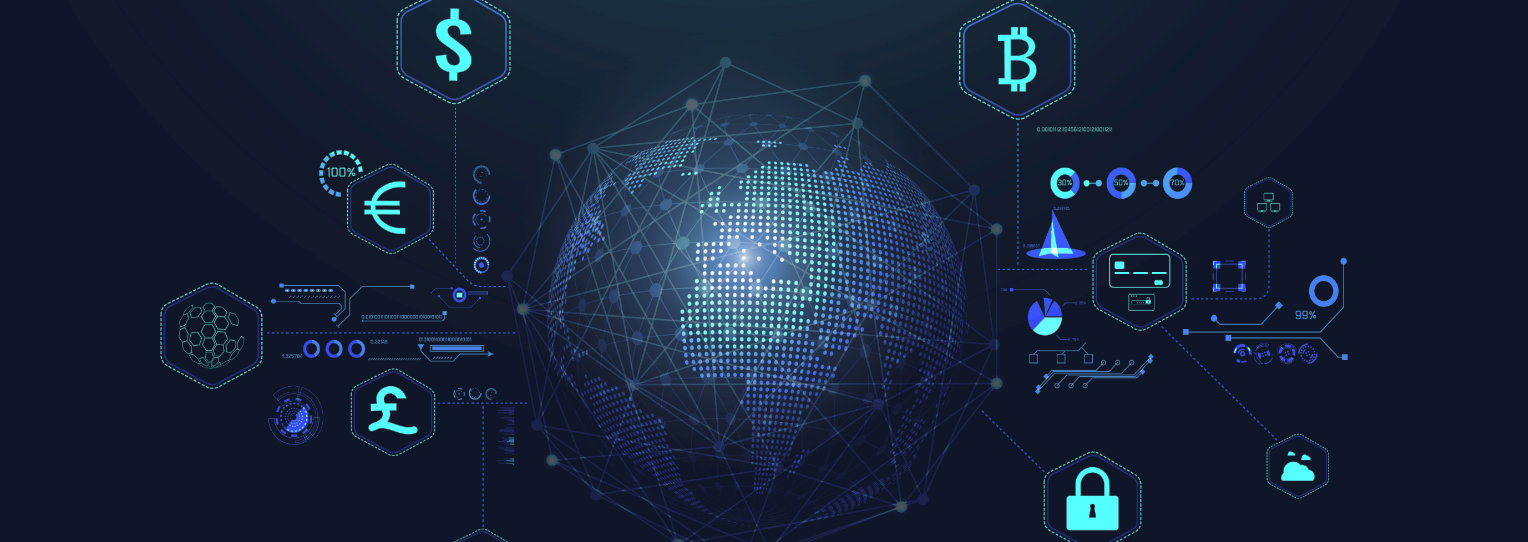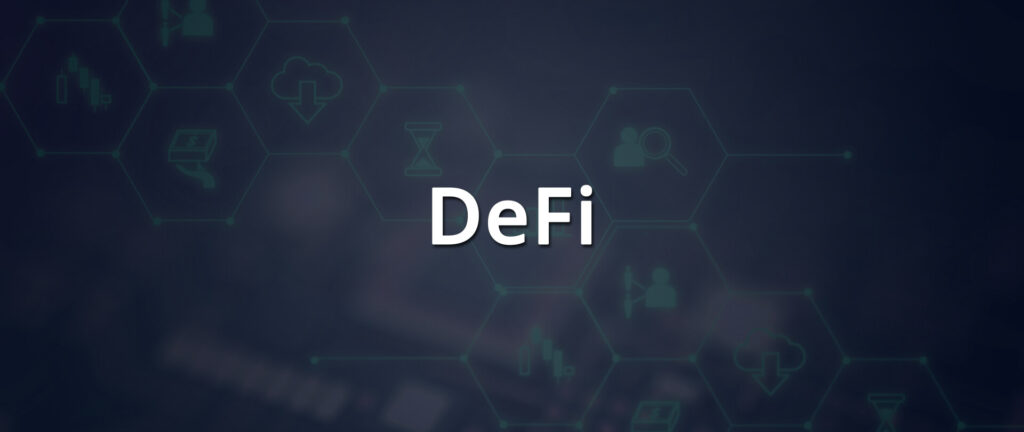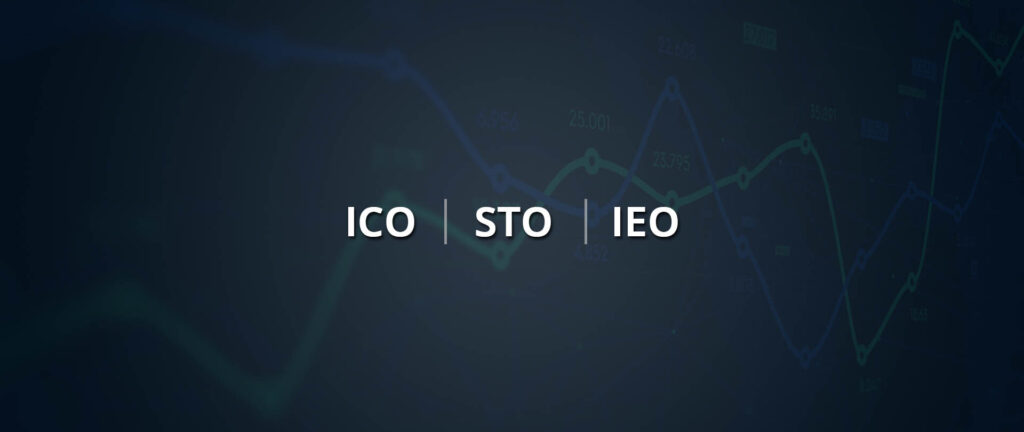
The concept of DAOs has drastically evolved ever since they emerged. They have shown potential in different industries, from business and gaming to philanthropy and media. Another sector that DAOs have recently started revolutionizing is the DeFi ecosystem. DAOs are adding a layer of transparency, autonomy, and trustlessness in DeFi protocols and applications, making financial transactions simpler and more reliable. This article briefly explains the concept of DeFi DAO and how you can start your DAO in the emerging DeFi space. Read ahead to know more.
- What is DeFi?
- How is DAO helping the DeFi Ecosystem?
- How to start a DAO in the DeFi space?
- Popular DeFi DAO Projects
What is DeFi?
Decentralized Finance (DeFi) is a financial technology that uses blockchain technology and cryptocurrency to manage financial transactions. DeFi aims to democratize finance by using blockchains to replace traditional intermediaries and trust mechanisms with peer-to-peer relationships offering a full spectrum of financial services—from everyday banking and loans to asset trading.
Every aspect of banking, lending, and trading today is managed by centralized systems where users need to place their trust in intermediaries such as banks and stock exchanges. DeFi replaces these middlemen with software, most commonly known as blockchain-based smart contracts. Instead of transacting through intermediaries, people trade directly with one another.
When a user makes a transaction in their conventional checking account, it’s recorded in a private ledger, i.e., your banking transaction history. This ledger is owned and managed by a large financial institution. Blockchain, however, stores these transactions in computer code.
Because blockchains are distributed, all parties using a DeFi application have an identical copy of the public ledger, with every transaction recorded in encrypted code. Not only does this secure the system, it also provides verification of payments and a record of asset ownership, minimizing the risk of fraudulent activity.
DAOs in DeFi can also help prevent tokens from collapsing. For instance, during the pandemic crash, holders of the MakerDAO tokens helped save the platform’s stablecoin DAI from falling below $1. MKR token holders voted to back DAI with USDC, a centralized stablecoin maintained by the payment company Centre.
DeFi is continuously making its way into many simple and complex financial transactions. Here are some of how DeFi is already being used:
Traditional financial transactions
DeFi involves payments, trading securities, insurance, lending, borrowing, etc. Not only does DeFi eliminate the intermediaries, but also the fees they charge for providing the services mentioned above. DeFi promotes peer-to-peer transactions where users can directly lend, borrow or trade money/assets with other users.
E-wallets
DeFi ecosystem provides digital wallets that can operate independently of the largest cryptocurrency exchanges, giving investors access to everything from cryptocurrency to blockchain games. DeFi cryptocurrency wallets are non-custodial and give users complete access and control of their private keys and funds.
Decentralized exchanges
These cryptocurrency exchanges facilitate peer-to-peer financial transactions allowing users to retain control over their money and assets. DEXs allow investors to buy, sell, and trade their cryptocurrency assets anonymously and securely.
Yield Farming
It allows investors to lend their cryptocurrency to others and reap potential rewards. Also known as liquidity farming, yield farming allows investors to stake their coins by depositing them into a lending protocol through a dApp. Other investors can then borrow these coins through the same dApp and use them to anticipate the coin’s market price.
Stablecoin
Stablecoins attempt to stabilize their value by tying themselves to fiat currencies such as the U.S dollar or to the price of a commodity like gold. As a medium of exchange, stablecoins are more useful than more-volatile cryptocurrencies.
Flash loans
Flash loans are cryptocurrency loans that borrow and repay funds in the same transaction. Borrowers can make money by entering into an encoded contract on Ethereum. This contract borrows funds, executes transactions, and repays the loan instantly. If the transaction can’t be executed or is at a loss, the funds automatically go back to the loaner.
NFTs
NFTs are short form for non-fungible tokens that create digital assets out of assets that are typically non-tradable. Every NFT is unique and cannot be copied, substituted, or subdivided. A blockchain is used to certify the authenticity and ownership of an NFT.
How is DAO helping the DeFi Ecosystem?
Decentralized Autonomous Organisations (DAOs) are community-driven protocols that distribute responsibility and decision-making processes among the members of an organization based on the governance structure. DAOs are non-hierarchical in nature. They perform and record routine tasks on a peer-to-peer, cryptographically secure public network. It is the voluntary contribution of stakeholders to operate, manage, and develop a DAO through a democratic consultation process.
DAOs operate on smart contracts—computer codes that automatically execute whenever criteria are met. The members of a DAO vote on different proposals influencing the organization’s development.
DAOs are an important part of the DeFi ecosystem. Decentralized finance protocols and projects need to be governed. In traditional centralized systems, an organization’s leaders decide and implement changes through a hierarchy. In decentralized systems such as DeFi, however, governance can get trickier because they are specifically designed to prevent any one entity or individual from controlling their operation.
Most of the major DeFi apps—from Uniswap to MakerDAO to Aave—are now governed by DAOs. DAOs manage DeFi applications through individual decisions made by decentralized validator nodes that own/possess sufficient tokens to approve blocks.
DeFi projects often share a strong connection with DAOs. DAOs help DeFi communities to coordinate and implement project-related decisions in an autonomous way. Here are a few examples to give you more clarity:
- Compound, a major DeFi project, operates through a DAO where COMP token holders can delegate their voting rights to others.
- MakerDAO token holders are responsible for governing the protocol, including choosing the new type(s) of collateral and shifting stability fees.
- PieDAO is a decentralized asset manager where token holders decide on investment projects.
- Uniswap has now transitioned to a DAO where UNI token holders have rights that can deploy the treasury, for example.
How to start a DAO in the DeFi space?
Starting DAOs gives instant governance within an organization, making decision-making easier and faster. Members participating in the DAO receive governance tokens for their contributions. These tokens give them the power to decide the DAO’s future by creating or voting on proposals.
1inch Network is a pioneer DeFi DAO, and its development can guide understanding the fundamentals of starting a DAO.
The 1inch Network
1inch network is an open organization where anyone can join and become a core contributor. Everyone who uses the organization’s services gets 1inch tokens that give them voting rights for specific settings in the protocol. In doing so, 1inch has attempted to eliminate long, overcrowded meetings and simplify decision-making.
In an interview, the co-founder of 1inch revealed that the first step in developing the DAO was to determine a specific value for the liquidity pools. Following that, they introduced a treasury, a multi-signature wallet owned by the entire DAO. All the money the organization earns and collects from different revenue streams is stored in this treasury.
The community decides together how to use this money. Core contributors propose ideas on the forum, and it gets deployed if the proposal receives enough votes. Some proposals may have a financial reward(s) associated with them. For example, if the DAO needs something to be built and a member implements it, they can get money for their contribution.
From the brief story about the development of 1inch DAO, we can list six steps to starting a Defi DAO.
Define the structure: It is important to remember that each DAO will have a different core structure, mostly influenced by the problem it attempts to solve. Here are a few questions that you can ask yourself to determine the structure of your DAO:
- What is the goal(s) of your DAO? What do you wish to achieve?
- What decisions will your DAO make?
- Is there a problem in your industry that a DAO can provide a pioneer solution for?
- Is your organization ready for a community-driven, decentralized ownership structure?
- How, if at all, will your community, customers, and consumers benefit from a DAO?
- What technical and developer resources do you need to launch a DAO?
- How to view your community assisting you in realizing the vision of your DAO?
- Are you ready to face the changing dynamics of the cryptocurrency market?
Decide the type of DAO: After deciding on the structure, the next task is to choose the type of DAO. Based on the members’ requirements and vision, they will come under protocol DAOs, investment DAO, grant DAO, social DAO, collector DAO, philanthropy DAO, etc.
Decide on the supply, allocation, and incentives of DAO tokens: DAO tokens help give voting and governance power, incentives, rewards, and other perks to members of the DAO. They also open wider opportunities for the development of your community. A good understanding of the use cases of the DAO token can go a long way in achieving optimal business growth and creating value for both users and the community.
Create the DAO platform: Given the rapid acceptance and popularity of DAO, there are numerous start-up tools and templates that DAOs can use to:
- Ascertain the legal infrastructure of the DAO
- Mint DAO coins
- Build teams
- Find members
- Decide the name of your DAO.
Ethereum blockchain provides some amazing tools for building a DAO. The most common ones include Colony, Aragon, OpenLaw, Syndicate, Orca Protocol, and DAOstack.
One of the easiest ways to create a DAO is through a whitelabel DAO platform. Whitelabel DAO platforms are fully customizable and configure the features of your platform according to your business needs, and takes mere days to be launch-ready.
Create DAO Treasury: there are DAO Treasury Tools that you can use to build a treasury. Some of the most common tools are Gnosis Safe, Multis, Llama, Juicebox, Utopia, and Parcel.
Create a community: Because DAOs are community-driven, a trustworthy, independent community is the strongest pillar of a DAO. An interactive, proactively engaged, and strong community can help a DAO grow and develop optimally. Some governance tools that can help build and strengthen a DAO community include Commonwealth, Snapshot Paladin, Sybil, Tally, and Boardroom.
Popular DeFi DAO Projects
Now that we have a basic understanding of creating a DAO let’s look at some of the most popular DeFi DAO projects.
Aave DeFi DAO
It is a DeFi lending protocol that allows lenders and borrowers to interact without any centralized intermediary. People can lend and borrow cryptocurrencies and other real-world assets such as real estate. When users lend, they earn interest; when they borrow, they pay interest. Holders of AAVE tokens have voting rights and can contribute to decisions such as how the treasury funds are used and potential upgrades to the system.
MakerDAO
It is a lending platform that powers a decentralized stablecoin, DAI, pegged to the U.S. dollar. The protocol allows users to take out loans in DAI using other cryptocurrencies as collateral. The stablecoin proves useful when financers of cryptocurrency want to exchange more volatile cryptocurrencies for a coin that’s worth something relatively stable. The platform’s native token, MKR, is an ERC-20 token and gives token holders the privilege to vote on issues such as new collateral types, adjusting risk parameters of the protocol concerning liquidation ratio, debt ceilings, stability, and savings rates, etc., and regulating smart contracts.
Uniswap DeFi DAO
A decentralized exchange (DEX) allows investors to swap ERC-20 tokens without the need for any intermediary. Uniswap uses liquidity pools that replace the order book format used by traditional exchanges. Users can place their idle ERC-20 into the Uniswap liquidity pool and generate a yield return. In the process, the platform incentivizes holders to create liquidity in the system. Uniswap relies on UNI, its governance token, to return protocol control to its members. UNI Token holders can vote on proposals impacting the project’s everyday operation and development.
Curve DAO
It is a DEX and automated maker protocol run by the Curve DAO. The protocol has been designed to make swapping between similar ERC-20 tokens (DAI and USDC) and Ethereum-based Bitcoin tokens (WBTC and renBTC) easier. The protocol’s governance token is CRV and can be used by token holders to participate in the network’s voting process. Interestingly, this token is also an incentive for liquidity providers and network participants.
LIDO Finance
It is a DeFi protocol offering liquid staking for Ethereum and other tokens. For every ETH that a user stakes on LIDO, he/she receives one tokenized version of staked Ether (stETH), i.e., a liquid token that can be used to earn a passive income on DeFi platforms. The protocol is governed by the Lido DAO. Its native token is LDO, which rewards users on the network. Token holders also get governance rights within the Lido DAO. The more LDO tokens a user holds, the more powerful their vote is.
Concluding Thoughts
As much as they may have advanced in recent years, both DeFi and DAO are still in their nascent stages. The governance structure of DAOs is still highly experimental, and communities continuously discover ways to deploy them efficiently. However, the tremendous growth of each only reflects the potential they hold to revolutionize the finance world. It seems fair to predict that over the next few years, we will see the maturation of many DeFi DAOs, ensuring a dimension of robustness in the DeFi ecosystem.


